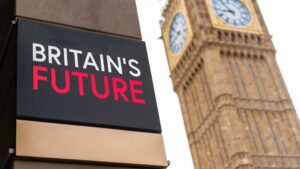New advice issued by Historic England outlines improving the energy efficiency of older establishments could reduce emissions from buildings by 5% annually. Though this comes with its own unique challenges.
A government report released earlier this year, titled ‘Adapting Historic Homes for Energy Efficiency: A Review of the Barriers,’ found that the lack of skills, training, and capacity within local planning authorities was a significant obstacle to obtaining planning and listed building consent for retrofitting these structures.
The report highlighted a particular challenge which is that most local planning authorities lack a conservation officer, and those that do have one often do not have access to training that integrates heritage, sustainability, and retrofit elements.
Addressing this, Historic England has published an Advice Note aimed at local planning authorities and heritage consultants called Adapting Historic Buildings for Energy and Carbon Efficiency.
The note provides advice on a range of energy efficient improvements, including insulation, boilers and heating systems, heat pumps, draft-proofing, replacing or adapting windows, and installing solar panels.
It also explains what permissions, such as listed building consent, are needed for some of the common changes required to decarbonise and improve the energy efficiency of historic buildings.
The document is divided into four sections:
- Section 1 sets out the need for climate action.
- Section 2 outlines the general approaches that should be adopted when considering adapting historic buildings for energy and carbon efficiency.
- Section 3 considers permissions that may be needed and the approach to decision making.
- Section 4 explores what changes can be made to historic buildings through the planning process, and where caution is required. It is not exhaustive, but focuses on the most common types of changes in response to climate change.
A number of case studies are presented, explaining, for example, the process by which the Grade I listed Chester Cathedral came to have 206 solar panels installed on its roof.
In another, a Medieval chapel was made more energy efficient as Historic Norfolk guided a conservation architect, a retrofit specialist and heritage consultants through the planning and listed building consent process
Ian Morrison, Director of Policy and Evidence at Historic England said: ‘This Advice Note demonstrates how the sustainable use and reuse of our historic buildings can help address the impacts of climate change. It provides clear advice to local planning authorities, heritage consultants and those involved in the planning process, alongside building owners and occupiers, to ensure England’s historic buildings are adapted appropriately to respond to the climate crisis.’
Image: Clever Sparkle
Justice for pubs: planning laws must change to protect historic buildings
Retrofitting UK historic buildings could generate £35bn annually, report finds


















Leave a Reply